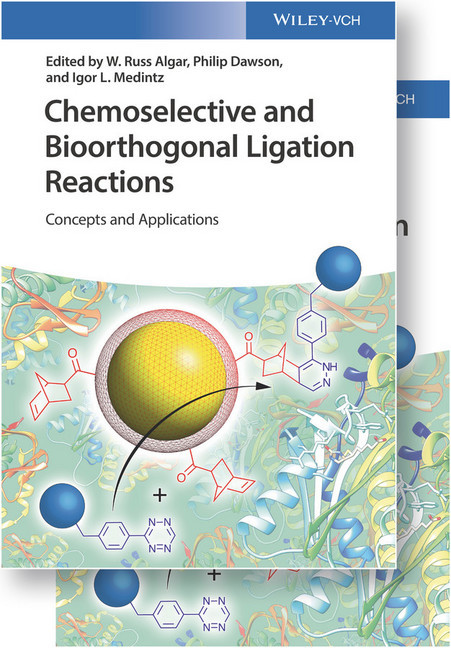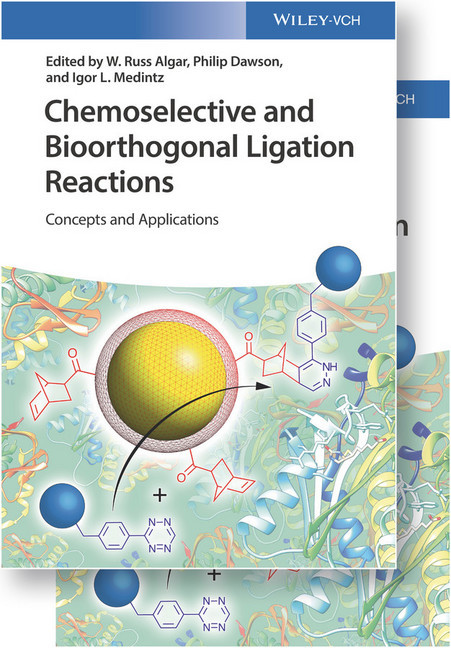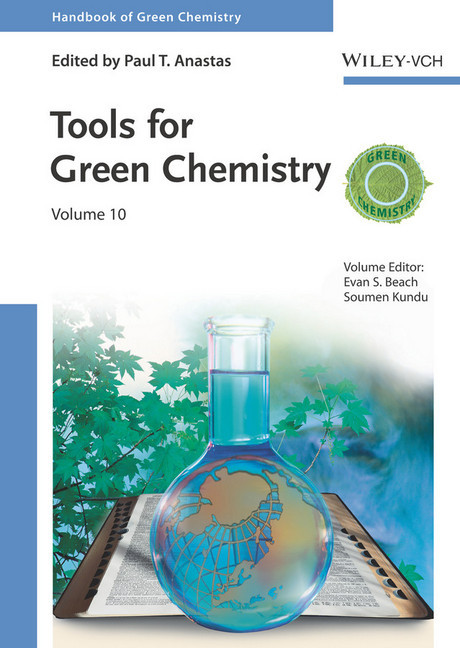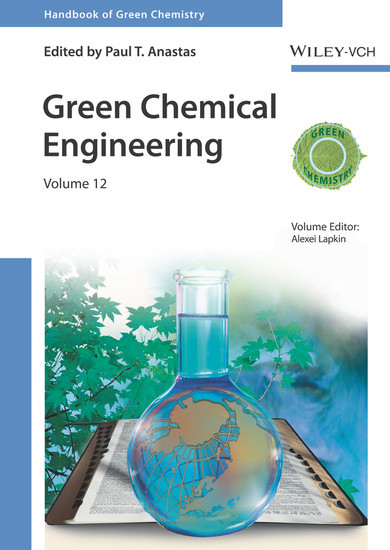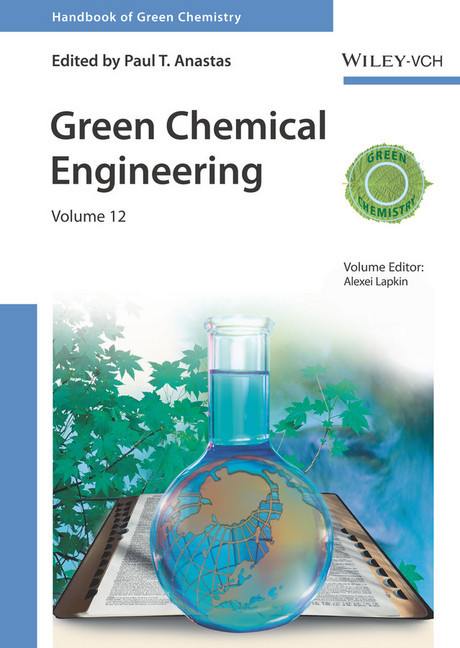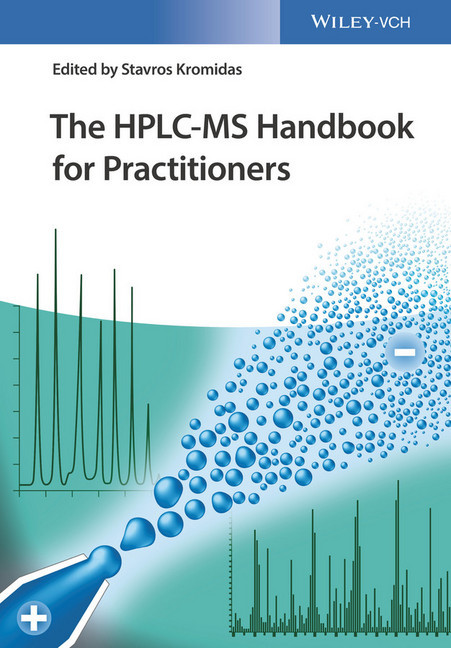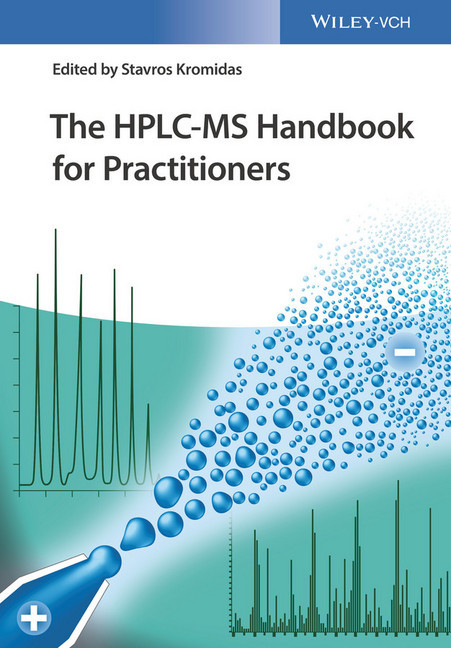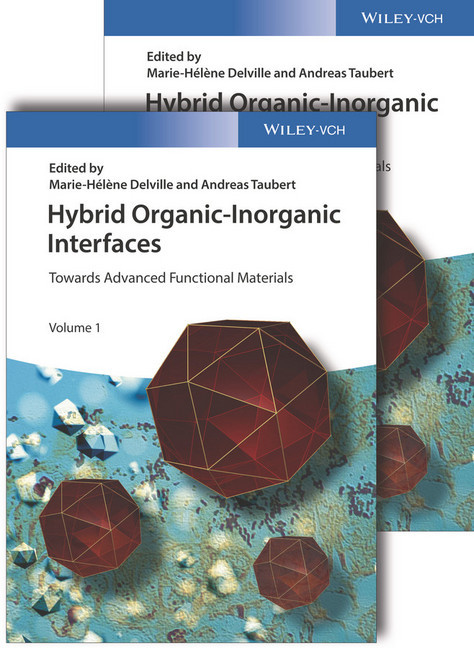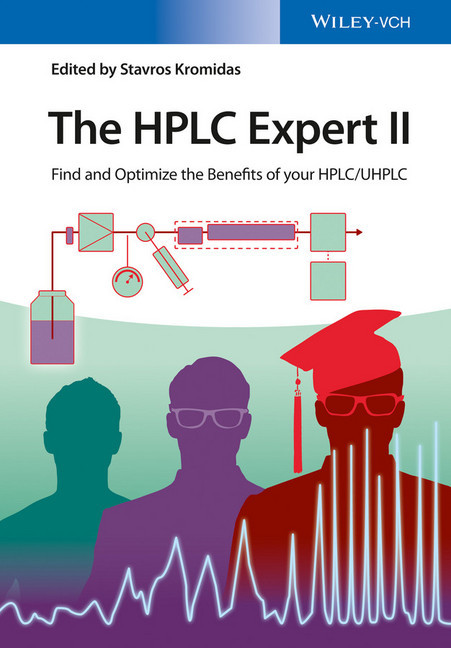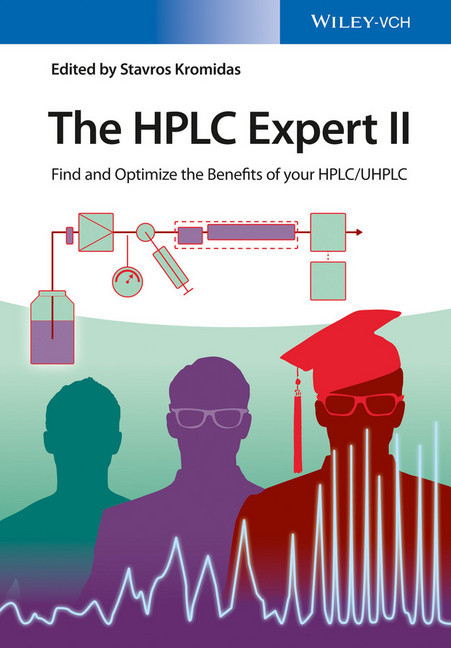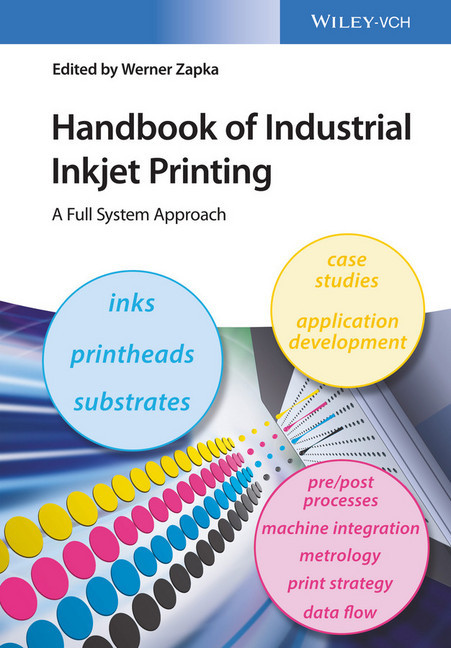Chemoselective and Bioorthogonal Ligation Reactions
Concepts and Applications
This timely, one-stop reference is the first on an emerging and interdisciplinary topic. Covering both established and recently developed ligation chemistries, the book is divided into two didactic parts: a section that focuses on the details of bioorthogonal and chemoselective ligation reactions at the level of fundamental organic chemistry, and a section that focuses on applications, particularly in the areas of chemical biology, biomaterials, and bioanalysis, highlighting the capabilities and benefits of the ligation reactions. With chapters authored by outstanding scientists who range from trailblazers in the field to young and emerging leaders, this book on a highly interdisciplinary topic will be of great interest for biochemists, biologists, materials scientists, pharmaceutical chemists, organic chemists, and many others.
Igor L. Medintz is the U.S. Navy's Senior Scientist for Biosensors and Biomaterials at the U.S. Naval Research Laboratory in Washington, D.C. He obtained his Ph.D. from the City University of New York and then spent three years as a postdoctoral researcher at the University of California, Berkeley. He has coauthored over 200 scientific publications, 18 patents, and won several awards including the 2013 Arthur S. Flemming Award for Basic Science.
W. Russ Algar is an Assistant Professor at the University of British Columbia in Vancouver, Canada, and a Canada Research Chair (Tier 2) and Michael Smith Foundation for Health Research Scholar. He obtained his Ph.D. from the University of Toronto, and then spent two years as a postdoctoral researcher at the U.S. Naval Research Laboratory in Washington, D.C., USA. He has authored over 70 scientific publications and won several awards and fellowships for his research.
Philip Dawson obtained his Ph.D. under the guidance of Prof. Kent. After two years postdoctoral research at Caltech under Prof. H. Gray he became Associate Professor at the Scripps Research Institute in La Jolla, USA. His research field is synthetic protein chemistry. He has published more than 100 papers in international journals and has won several awards (Max Bergmann medal, Vincent du Vigneaud Award of the American Peptide Society).
Igor L. Medintz is the U.S. Navy's Senior Scientist for Biosensors and Biomaterials at the U.S. Naval Research Laboratory in Washington, D.C. He obtained his Ph.D. from the City University of New York and then spent three years as a postdoctoral researcher at the University of California, Berkeley. He has coauthored over 200 scientific publications, 18 patents, and won several awards including the 2013 Arthur S. Flemming Award for Basic Science.
W. Russ Algar is an Assistant Professor at the University of British Columbia in Vancouver, Canada, and a Canada Research Chair (Tier 2) and Michael Smith Foundation for Health Research Scholar. He obtained his Ph.D. from the University of Toronto, and then spent two years as a postdoctoral researcher at the U.S. Naval Research Laboratory in Washington, D.C., USA. He has authored over 70 scientific publications and won several awards and fellowships for his research.
Philip Dawson obtained his Ph.D. under the guidance of Prof. Kent. After two years postdoctoral research at Caltech under Prof. H. Gray he became Associate Professor at the Scripps Research Institute in La Jolla, USA. His research field is synthetic protein chemistry. He has published more than 100 papers in international journals and has won several awards (Max Bergmann medal, Vincent du Vigneaud Award of the American Peptide Society).
1;Cover;1 2;Title Page;5 3;Copyright;7 4;Contents;8 5;List of Contributors;22 6;Preface;28 7;Volume 1;32 7.1;Part I Chemistries;32 7.1.1;Chapter 1 A Brief Introduction to Traditional Bioconjugate Chemistry;34 7.1.1.1;1.1 Introduction;34 7.1.1.2;1.2 Reactive Groups of Biomolecules;34 7.1.1.3;1.3 Traditional Bioconjugate Reactions;44 7.1.1.4;1.4 Cross-Linking Strategies;52 7.1.1.5;1.5 Challenges Associated with Traditional Bioconjugate Reactions;58 7.1.1.6;1.6 Conclusions;61 7.1.1.7;References;61 7.1.2;Chapter 2 [3+2]-Dipolar Cycloadditions in Bioconjugation;68 7.1.2.1;2.1 Introduction;68 7.1.2.2;2.2 Copper-Catalyzed Strategies;69 7.1.2.3;2.3 Strain-Promoted Cycloaddition;81 7.1.2.4;2.4 Future Directions;91 7.1.2.5;References;92 7.1.3;Chapter 3 Diels-Alder and Inverse Diels-Alder Reactions;98 7.1.3.1;3.1 Introduction;98 7.1.3.2;3.2 Diels-Alder Reaction;98 7.1.3.3;3.3 Inverse Diels-Alder Reaction;107 7.1.3.4;3.4 Summary and Outlook;120 7.1.3.5;References;120 7.1.4;Chapter 4 The Staudinger Ligation;128 7.1.4.1;4.1 Mechanism and Scope of the Classical Staudinger Reaction;128 7.1.4.2;4.2 Methodology and Mechanism of the Nontraceless Staudinger Ligation;130 7.1.4.3;4.3 Methodology and Mechanism of the Traceless Staudinger Ligation;131 7.1.4.4;4.4 Methodology and Mechanism of the Staudinger-Phosphite and Staudinger-Phosphonite Reaction;135 7.1.4.5;4.5 Applications of the Staudinger Ligation and its Variants as Bioorthogonal Tools;138 7.1.4.6;References;142 7.1.5;Chapter 5 Thiol-Ene Chemistry;148 7.1.5.1;5.1 Introduction;148 7.1.5.2;5.2 Mechanism and Stereochemistry;150 7.1.5.3;5.3 Reaction Kinetics;158 7.1.5.4;5.4 Chemoselectivity and Side Reactions;160 7.1.5.5;5.5 Applications and Representative Examples from the Literature;163 7.1.5.6;References;168 7.1.6;Chapter 6 Ligand-Directed Tosyl and Acyl Imidazole Chemistry;178 7.1.6.1;6.1 Introduction;178 7.1.6.2;6.2 Ligand-Directed Tosyl Chemistry;181 7.1.6.3;6.3 Ligand-Directed Acyl Imidazole Chemistry;186 7.1.6.4;6.4 Conclusions and Future Directions;191 7.1.6.5;References;191 7.1.7;Chapter 7 Bioorthogonal Labeling of Cellular Proteins by Enzymatic and Related Mechanisms;196 7.1.7.1;7.1 Introduction;196 7.1.7.2;7.2 Enzymatic Labeling;197 7.1.7.3;7.3 Self-Labeling Proteins and Peptides;221 7.1.7.4;7.4 Alternate Methods of Protein Labeling;232 7.1.7.5;7.5 Conclusions;242 7.1.7.6;Acknowledgments;242 7.1.7.7;References;242 7.1.8;Chapter 8 Metal-Mediated Bioconjugation;262 7.1.8.1;8.1 Selective Bond Formation on Biomolecules Using Organometallics;262 7.1.8.2;8.2 Oxidative Ligations at Tyrosine (Ni, Pd, Ru, Ce);263 7.1.8.3;8.3 Indium-Mediated Ligations;266 7.1.8.4;8.4 Reductive Alkylation of Lysine (Ir);268 7.1.8.5;8.5 Metal-Promoted Cysteine Alkylation (Au, Rh);268 7.1.8.6;8.6 Ligations Featuring Rhodium Carbenoids;272 7.1.8.7;8.7 Tsuji-Trost Alkylation of Tyrosine (Pd);275 7.1.8.8;8.8 Mizoroki-Heck Reaction (Pd);276 7.1.8.9;8.9 Cross-Coupling at Alkynes (Pd, Cu);278 7.1.8.10;8.10 Suzuki-Miyaura Cross-Coupling (Pd);282 7.1.8.11;8.11 Olefin Metathesis (Ru);285 7.1.8.12;8.12 Prospects in Metal-Mediated Ligations;288 7.1.8.13;References;289 8;Volume 2;302 8.1;Part II Applications;302 8.1.1;Chapter 9 Protein and Antibody Labeling;304 8.1.1.1;9.1 Labeling Single Proteins to Study Intramolecular Conformational Changes;304 8.1.1.2;9.2 Monitoring Intermolecular Protein Interactions;307 8.1.1.3;9.3 Enzymes and Post-translational Protein Modifications;311 8.1.1.4;9.4 Cell Membrane Staining and Tumor Detection;312 8.1.1.5;9.5 Protein Labeling for Therapeutic Applications;317 8.1.1.6;9.6 Biosensing;322 8.1.1.7;9.7 Protein-Based Smart Materials;324 8.1.1.8;Summary;327 8.1.1.9;References;327 8.1.2;Chapter 10 Activity-Based Protein Profiling;336 8.1.2.1;10.1 Introduction;336 8.1.2.2;10.2 Bioorthogonal Chemistry in Activity-Based Protein Profiling;338 8.1.2.3;10.3 Selected Applications of Tandem ABPP;352 8.1.2.4;10.4 Conclusions and Future Outlook;356 8.1.2.5;Acknowledgments;357 8.1.2.6;References;357 8.1.3;
Medintz, Igor
Algar, W. R.
Dawson, Philip
| ISBN | 9783527683444 |
|---|---|
| Artikelnummer | 9783527683444 |
| Medientyp | E-Book - PDF |
| Copyrightjahr | 2017 |
| Verlag | Wiley-VCH |
| Umfang | 768 Seiten |
| Sprache | Englisch |
| Kopierschutz | Adobe DRM |

